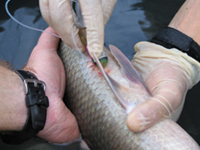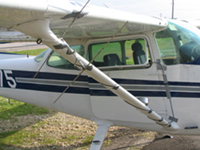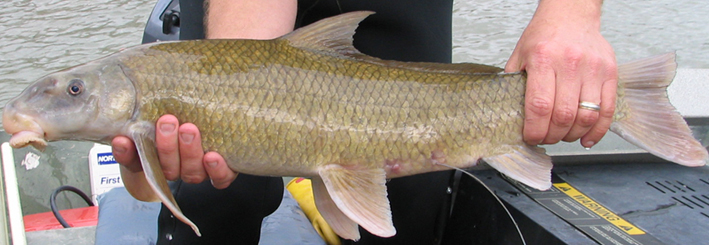Blue Sucker Life History Project
Blue Sucker Life History Project

BIO-WEST began conducted an instream flow study to develop hydraulic modeling tools and habitat use criteria for fish in the lower Colorado River to assess potential changes in habitat availability under various water-release strategies using blue sucker (Cycleptus elongatus) as a model. Our field crews sampled all blue sucker life stages, using radio telemetry to track fish. They successfully tagged and tracked 30 adults by boat and plane, and extensively sampled for larval and juvenile blue sucker for which little habitat information is known. Aside from fish sampling, our data collection included placement of benchmarks, surveying, collection of river bathymetry and discharge, and collection of depth and velocity validation points. As a result of these studies, BIO-WEST added substantial information to the blue sucker behavioral knowledge base including adult habitat use, spawning habitat use, and migratory behavior.

Data have shown that blue sucker require at least some deep, high-velocity rapids throughout the year to maintain a successful population. Perhaps even more important is the maintenance of adequate amounts of spawning habitat during early spring months. Over the course of the study, the project team identified seven different spawning areas either by witnessing spawning activity or by collection of blue sucker eggs.

Radio-telemetry data indicate that spawning migration of blue suckers in the lower Colorado River is strongly tied to discharge and is likely initiated by high flows. During years of lower flow, blue sucker tend to stay close to their “home” riffle and spawn with members of their same riffle subpopulation. Therefore, high-flow years may serve as important dispersal mechanisms needed to stimulate gene flow between distant subpopulations from various riffle complexes. This project WAS A component of the Lower Colorado River Instream Flow Study.

